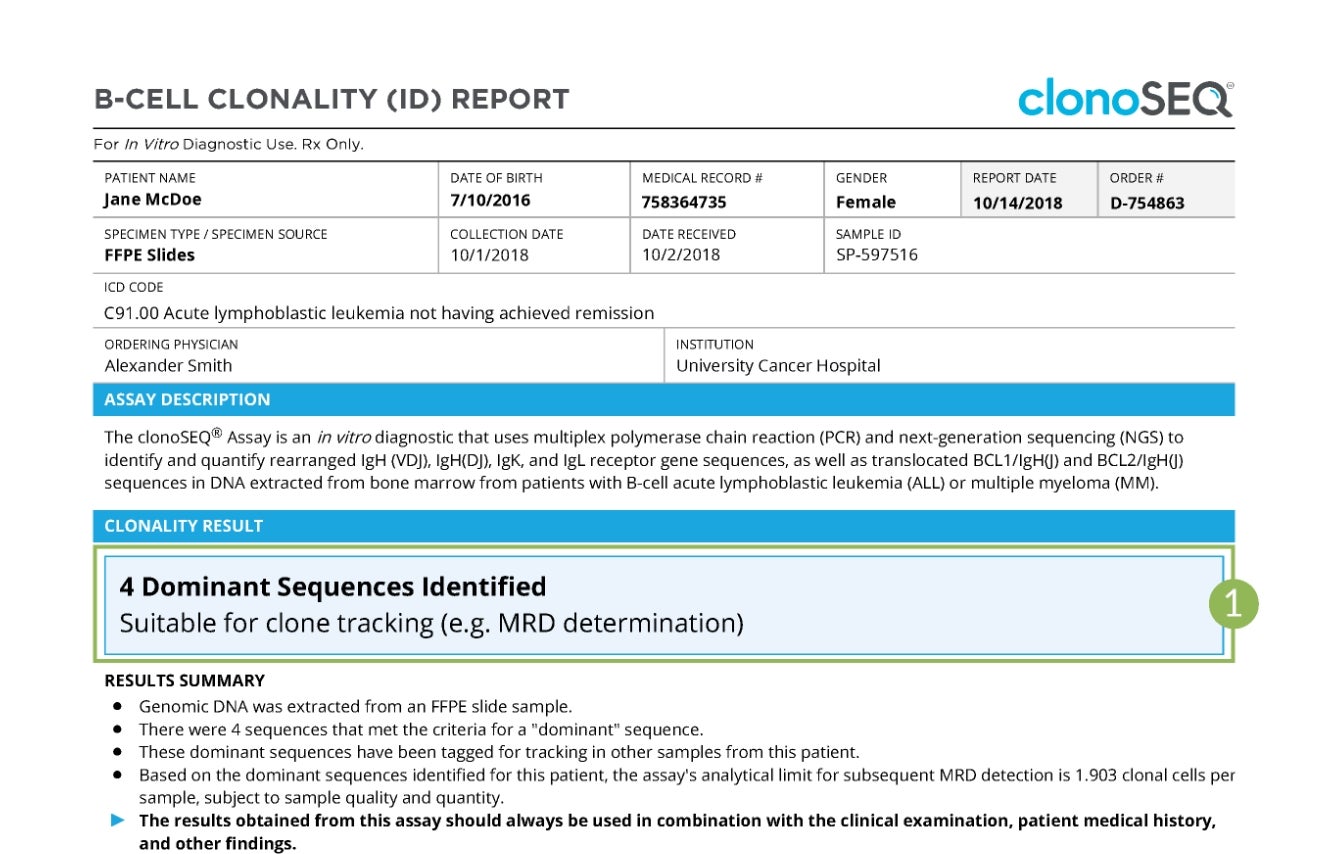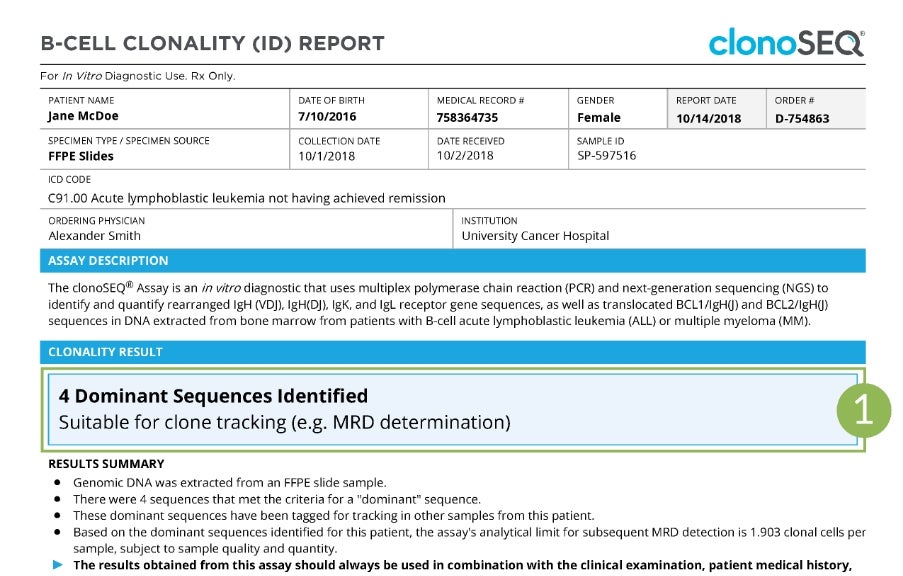Understanding Your Report
Let’s take a closer look at your child’s reports
Your child’s doctor will likely order the clonoSEQ test multiple times in order to track your child’s progress. These test results will be delivered to your child’s doctor in the form of a report. Below are two types of reports you may see after your child is tested with clonoSEQ.
Be sure to talk to your child’s doctor about the optimal timing for MRD testing with clonoSEQ
Sample Clonality (ID) Report
Tap numbers on the report for more information.


Clonality (ID) Status
The number of trackable DNA sequences that were identified. Your child may have one DNA sequence or multiple DNA sequences.
In rare cases, a dominant sequence may not be identified. If this occurs, we will work with your child’s doctor to identify other specimen options.
Talk to your child’s doctor about ordering their Clonality (ID) Test upfront, so you can have a baseline for their future MRD tests. Ask your child’s doctor how often they will be testing with clonoSEQ and receiving your child’s reports.
Sample Tracking (MRD) Report
Tap numbers on the report for more information.
Your Child’s MRD Status
A positive (+) result means residual disease was detected. A result of zero means residual disease was not detected. Each report will provide your child’s updated MRD status.* You can gain valuable insights about your child’s cancer regardless of your child’s result.
Talk with your child’s doctor about their MRD status to better understand what your child’s result means for them and their treatment plan.
*False-positive or false-negative results may occur for reasons including, but not limited to: contamination, technical, and/or biological factors.
MRD Level
This number shows the amount of cancer present in your child’s sample. Your child’s doctor can help put this number into context based on the current phase of their care and treatment goals.
MRD Trends
A graph will show any changes detected in your child’s MRD level over time. Watching these changes may help you and your child’s doctor better understand their response to treatment and track any changes in their cancer levels.
This page is intended for a US-based audience.
clonoSEQ® is available as an FDA-cleared in vitro diagnostic (IVD) test service provided by Adaptive Biotechnologies to detect measurable residual disease (MRD) in bone marrow from patients with multiple myeloma or B-cell acute lymphoblastic leukemia (B-ALL) and blood or bone marrow from patients with chronic lymphocytic leukemia (CLL). Additionally, clonoSEQ is available for use in other lymphoid cancers and specimen types as a CLIA-validated laboratory-developed test (LDT). To review the FDA-cleared uses of clonoSEQ, visit clonoSEQ.com/technical-summary.